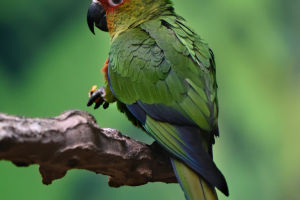Guanacos (Lama guanicoe) are animals from South America that look like small camels.
They are known for living in tough environments and being social animals. Let's learn more about them in simple words.
Physical Features
• Size: Guanacos are about 3.3 to 4.3 feet (1 to 1.3 meters) tall at the shoulder and weigh between 90 to 310 pounds (40 to 140 kg).
• Color: They have reddish-brown fur on their backs and white fur on their bellies. Their faces are gray, and they have long, pointed ears. Their thick fur helps them stay warm in cold weather.
• Lifespan: In the wild, guanacos usually live for 20 to 25 years, and some may live up to 28 years.
Where They Live
• Range: Guanacos live in many countries in South America, such as Argentina, Chile, Peru, Bolivia, and Paraguay. They can live at sea level or high up in the Andes Mountains, as high as 12,800 feet (4,300 meters).
• Habitat: Guanacos live in many places, including deserts, grasslands, forests, and mountains. They can survive in very dry deserts like the Atacama and in cold, wet places like Tierra del Fuego.
Behavior and Social Life
• Herds: Guanacos live in groups called herds. A herd usually has one male, several females, and their young. Males without herds form their own groups.
• Communication: They make sounds and use body language to communicate. When they feel threatened, guanacos can run fast—up to 35 miles per hour (56 km/h)—and they sometimes spit when they are angry or scared.
What They Eat
Guanacos are herbivores, which means they eat only plants. They eat grasses, shrubs, herbs, and even cactus. Their diet changes with the seasons depending on what plants are available.
Reproduction
• Breeding: The breeding season is from November to February. Female guanacos are pregnant for about 11 months and usually give birth to one baby, called a chulengo.
• Baby Guanacos: Chulengos can stand up within an hour after they are born. They stay with their mothers until the next baby is born.
Conservation
While guanacos are not currently endangered, they do face challenges that threaten their populations. One major issue is the decline in their natural habitats, which reduces the space they need to roam and find food. Additionally, they compete intensely with livestock for grazing areas, making it harder for them to thrive.
To address these threats, various conservation programs are actively working to protect guanacos, particularly in national parks where their habitats can be preserved and restored. These efforts aim to ensure that guanacos continue to flourish in their natural environment.
In short, guanacos are amazing animals that can survive in many different environments. They are important to South American ecosystems and deserve protection.


